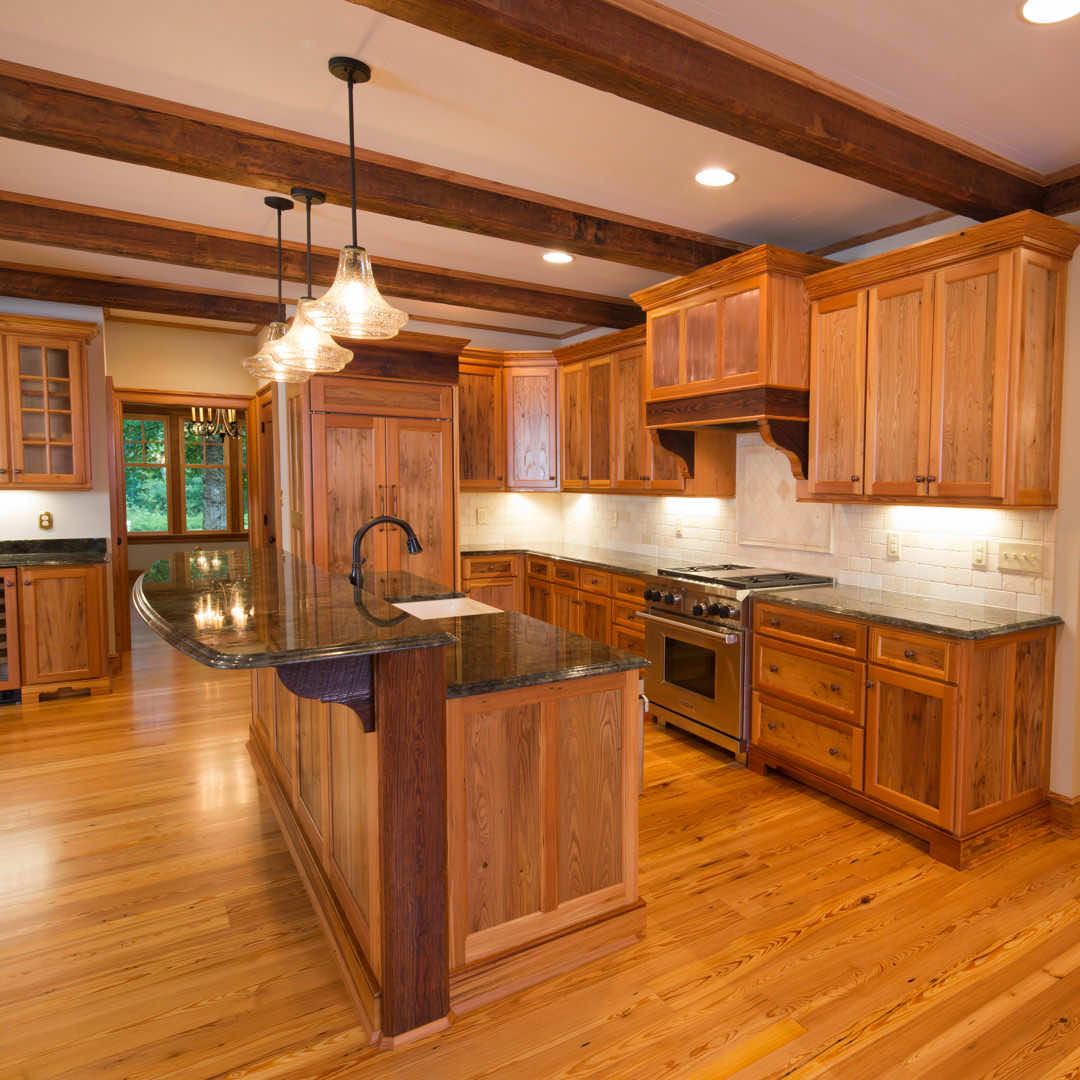Buyer’s Guide to Salvaged Wood

Salvaged wood is a popular renovation material, offering many aesthetic and practical benefits. However, finding a reliable source of quality reclaimed wood isn't a matter of luck; it requires a solid understanding of how to make the proper selection.
Adding to the challenge is that many online sellers may be unable to meet your quality or authenticity standards. Navigating this market is crucial because the wood you choose has long-term implications—it could elevate your room or leave you with regret.
Read on to learn how to source high-quality salvaged wood that will transform and add value to your living space or room.
Understanding the Terms: Reclaimed, Salvaged, and Repurposed
Reclaimed, salvaged, and repurposed wood are all terms for recycled lumber with nuanced differences. Salvaged wood often originates from naturally fallen trees or land cleared for construction, making it a unique choice for eco-conscious projects.
Reclaimed wood usually comes from old structures like barns, factories, or homes, offering rich history and timeless appeal. Repurposed wood is a versatile term encompassing any recycled wood adapted for a new, meaningful use.
While these terms differ slightly, they all point to wood given a second life. When purchasing reclaimed wood, splitting hairs over terminology is less important. Focus instead on aspects like the source, condition, and any processing the wood has undergone to ensure the highest quality.
The Issue with Online Marketplaces
As the popularity of salvaged wood increases, so do the sellers looking to cash in and make a quick buck. You’ll often find “salvaged wood” at seemingly dirt-cheap prices on Craigslist, Facebook, and other online marketplaces. While it may initially seem like a great deal, cheap wood comes with serious risks.
Sellers in these informal markets often don't know the complete provenance or history of the wood they sell. There could be issues like lead paint, insecure fasteners, or insect damage. In some instances, unscrupulous sellers will “doctor” new wood to mimic a vintage look.
Prep work like removing nails or kiln-drying the wood to eliminate insect infestations and ensure its longevity is also unlikely. And there are no guarantees about the quality and integrity of the wood itself.
The E.T. Moore Difference
Established in 1969, E.T. Moore specializes in high-quality salvaged wood. Over the decades, we've earned a well-deserved reputation as the go-to source for vintage heart pine and other reclaimed wood products.
We source our wood from decommissioned mills and factories. Our buyers head to the demolition site and hand-select the best wood pieces. We then ship it to our 5-acre Richmond, VA, facility, where it undergoes a proprietary multi-step process to ensure quality and durability.
Our extensive inventory allows us to match sizes and grades seamlessly, ensuring your repairs blend in as if they were original features. A meticulous milling process guarantees easy installation without adjustments needed on your part.
Unlike the salvaged wood found on Craigslist and other online markets, E.T. Moore's reclaimed lumber is unmatched in quality and durability. Our exacting standards for sourcing, selection, processing, and milling mean you can trust you're getting the best vintage wood available.
Buying Tips
When shopping for reclaimed wood, be selective about sourcing. Opt for suppliers like E.T. Moore that hand-select wood from decommissioned sites, avoiding lower-quality mass-salvaged materials. Examine pieces in person when possible, looking for sound structural integrity and aesthetic appeal. Beware of knotting, cracking, or rot.
Ask about processing methods. Quality reclaimed wood undergoes meticulous milling and often kiln-drying to ensure stability. Finish and intended use will also dictate preparations like planing or sanding for smooth surfaces. Don't assume "reclaimed" means ready for installation.
Finally, purchase more than you need. There will be waste from squaring ends, trimming damages, and custom-cutting installs. Especially with higher-grade woods, you want wiggle room. Adding 10% to your square footage calculations is a good rule of thumb.

5 Reasons to Opt for Reclaimed Wood
For several reasons, reclaimed wood is an excellent choice when planning a home renovation or improvement project.
Here are a few compelling arguments to make the leap:
- Sustainability: Choosing reclaimed wood not only looks great but also reduces waste and saves trees, making it an eco-conscious choice.
- Durability: Old-growth reclaimed wood often exceeds the hardness and resilience of newer lumber.
- Aesthetics: Reclaimed wood's unique, rustic appeal gives your space an unmatched, timeless beauty.
- History: Incorporating salvaged wood into your project provides an interesting story and adds unparalleled character.
- Property Value: Using quality reclaimed wood could raise your home's resale value.
Where to Buy Reclaimed Wood
If you're looking for the highest quality reclaimed wood, look no further than E.T. Moore. We are the premier source for reclaimed wood in the United States, with over 50 years of experience and a vast inventory of antique lumber.
We welcome custom orders, skillfully matching sizes, grades, and finishes to your specifications. Our reclaimed wood is artisan-quality and built to last for generations, whether it's flooring, mantels, beams, or any other project.

High-Quality Salvaged Wood from E.T. Moore
For top-tier reclaimed wood, E.T. Moore stands unmatched. Our meticulous processes ensure our salvaged wood exceeds the highest quality and durability standards. Whether your project is big or small, our expertise and diverse inventory make us your one-stop solution for all your reclaimed wood needs.
Ready to elevate your space with premium reclaimed wood? Click below to explore our salvaged flooring and lumber options: